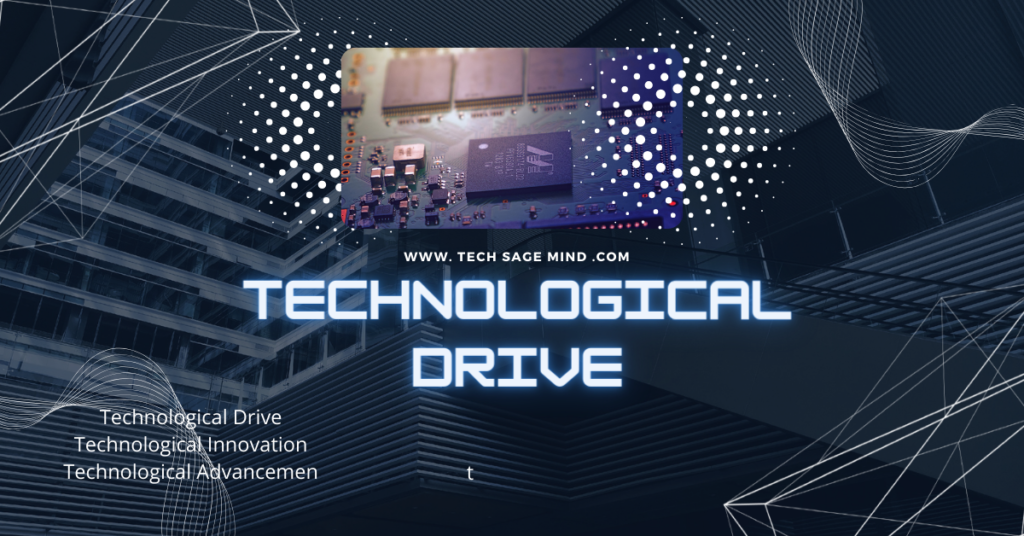Technological drive is a term used to describe the rapid pace of technological innovation and the increasing importance of technology in our lives. It is driven by a number of factors, including the increasing availability of data, the falling cost of computing power, and the growing demand for new and better technologies.
How Does Technological Drive Affect Businesses?
The technological drive is having a major impact on businesses of all sizes. Companies that are able to embrace new technologies and adapt to change are more likely to succeed in the long run. Those that are slow to adopt new technologies or that are unable to adapt to change are at risk of being left behind.
Some of the ways that technological innovation is affecting businesses include:
- The rise of digital transformation:
Businesses are increasingly moving their operations online, which requires them to adopt new technologies such as cloud computing, big data analytics and artificial intelligence.
- The changing customer landscape:
Customers are demanding more personalized and convenient experiences, which is forcing businesses to adopt new technologies. such as chatbots and augmented reality.
- The need for innovation:
Businesses need to constantly innovate in order to stay ahead of the competition. This requires them to invest in new technologies and research and development.
How Does Technological Drive Affect Our Lives?
The technological drive is also having a major impact on our lives. We are now more connected than ever before, and we have access to a vast amount of information and entertainment at our fingertips. Technology is also making our lives more efficient and convenient, and it is helping us to solve some of the world’s biggest problems.
Some of the ways that technological drive is affecting our lives include:
- The rise of the internet of things (IoT):
The IoT is connecting billions of devices to the internet, which is changing the way we live and work. For example, IoT devices are being used to monitor our health, manage our homes, and control our transportation.
- The growth of artificial intelligence (AI):
AI is becoming increasingly sophisticated, and it is being used in a wide variety of applications, such as self-driving cars, facial recognition software, and medical diagnosis.
- The development of new materials and technologies:
New materials and technologies are being developed all the time, which is opening up new possibilities for innovation. For example, 3D printing is being used to create custom-made products, and graphene is being used to develop new electronic devices.
The Future of Technological Drive
The pace of technological advancement is only going to accelerate in the years to come. This will create new opportunities and challenges for businesses and individuals. Businesses that are able to embrace new technologies and adapt to change will be the ones that succeed in the future.
Here are some of the trends that are likely to shape the future of technological drive:
- The rise of quantum computing:
Quantum computing is a new technology that has the potential to revolutionize many industries. For example, quantum computers could be used to develop new drugs, design new materials, and break encryption codes.
- The development of brain-computer interfaces:
Brain-computer interfaces (BCIs) are devices that allow humans to control computers with their minds. BCIs are still in their early stages of development, but they have the potential to revolutionize the way we interact with technology.
- The growth of synthetic biology:
Synthetic biology is the engineering of biological systems. Synthetic biologists are developing new ways to create organisms that can perform specific tasks, such as producing biofuels or cleaning up pollution.
The future of technological drive is full of possibilities. It is up to us to shape the way that technology is used to create a better future for all.
Conclusion
The technological drive is a powerful force that is changing the world around us. It is important to understand the impact of technology on businesses and individuals and to be prepared for the changes that are to come. By embracing new technologies and adapting to change, we can ensure that we are part of the solution, not the problem.
FAQ’s:
What is a technological drive?
The technological drive is the force that pushes technological innovation forward. It is the desire to create new and better technologies and to use existing technologies to solve problems and improve people’s lives.
What are the factors that drive technological innovation?
Economic factors: Businesses are constantly looking for new ways to improve their efficiency and productivity, and this often leads to the development of new technologies.
Military factors: Governments invest heavily in the research and development of new technologies for military purposes.
Social factors: People want to live better lives, and technology can help them do this by improving healthcare, education, and other aspects of society.
What are the benefits of technological drive?
Benefits:
Economic growth: technological innovation leads to the creation of new industries and jobs, and it can also help boost productivity in existing industries.
Improved quality of life: Technology can help to improve our health, education, and other aspects of our lives. For example, advances in medical technology have led to new treatments and cures for diseases, and advances in educational technology are making it easier for people to learn new skills.
Increased problem-solving capacity: Technology can help us solve complex problems that we would not be able to solve without it. For example, artificial intelligence is being used to develop new ways to diagnose and treat diseases and to predict and respond to natural disasters.
What are the challenges of technological drive?
Challenges:
The potential for job displacement: As new technologies are developed, some jobs may become obsolete. It is important to ensure that people who are displaced by technological change have access to retraining and other support services.
The potential for misuse of technology: Technology can be used for good or for evil. It is important to develop safeguards to prevent technology from being used for malicious purposes.
The ethical implications of new technologies: As new technologies are developed, it is important to consider the ethical implications of their use.
For example, there are ethical concerns about the use of facial recognition technology and other forms of surveillance technology.
How can we ensure that technological innovation benefits everyone?
Strategies:
Invest in education and training so that people have the skills they need to succeed in the new economy.
Develop policies that support innovation and entrepreneurship.
Ensure that everyone has access to affordable technology.
Develop safeguards to prevent the misuse of technology.
Consider the ethical implications of new technologies before they are widely deployed.
What are some examples of technological drive in action?
Examples:
The development of the internet has revolutionized the way we communicate and access information.
The Smartphones development made it possible for us to stay connected and productive on the go.
The development of artificial intelligence is leading to new and innovative solutions in a wide range of fields, including healthcare, education, and transportation.
The development of renewable energy technologies is helping us reduce our reliance on fossil fuels and combat climate change.




